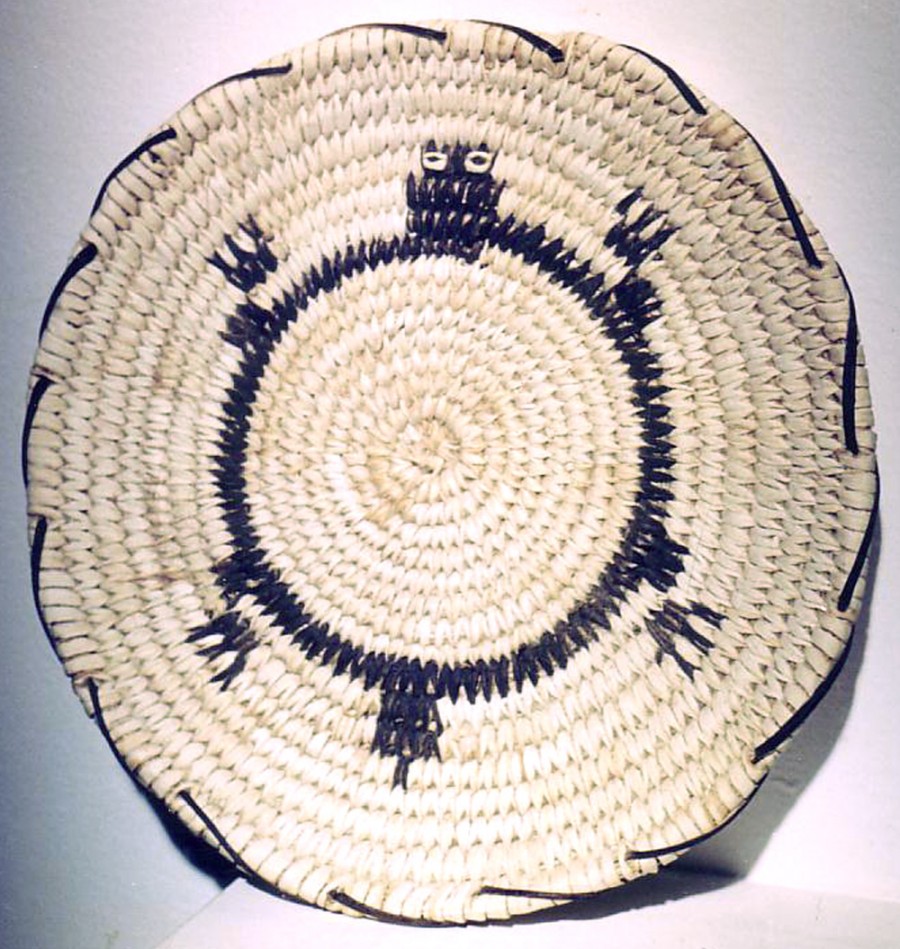Tohono O’odham (Papago)
Basket with tortoise design
Yucca and Devil’s Claw
c. 1991
7 1/2” diameter
Gift from the Edward J. Guarino Collection
In honor of Breton Merritt
2009.26.21
This closed-stitch coiled basket comes from the Tohono O’odham people of the Sonoran Desert in the southwest United States and northern Mexico (Tohono O’odham Nation). Historically, baskets served in household activities such as washing, gathering fruit, and mixing dough. They were also used in ceremonies and as part of a reciprocal gift exchange (Clarke and Dittemore).
Tohono O’odham coiled baskets feature a distinctive square knot as the center, or “start.” The yucca fibers are then wrapped around the start and sewn in tight stitches around the bundles of grasses which make up the coils, or “warp.” Traditionally, the warp was made of durable willow shoots. However, as weavers shifted towards making baskets for sale to outsiders, they began to use the more plentiful yucca for the warp, because these baskets did not need to stand up to everyday use (Dalrymple 2000; Tanner 1983; Whiteford 1988). On this basket, the weaver departs from the coiling technique with the lively, stitched-on eyes.
The tortoise motif, with legs that point in opposite directions, mirrors the shape of the basket (Johnson 2010). The tortoise is an enduring resident of the region and thus reflective of the desert environment. It is commonly seen on baskets made for the tourist trade. Historically, the tortoise played practical and symbolic roles for ancient civilizations of the Southwest (Schneider 1996).
Recently, Native advocacy groups have turned to basket weaving as a potential source of economic self-sufficiency. Tohono O’odham Community Action is one such organization devoted to bringing the weavers more autonomy and control over the production and sale of their works (TOCA • Tohono O’odham Community Action).
Jacinthe Sasson-Yenor
